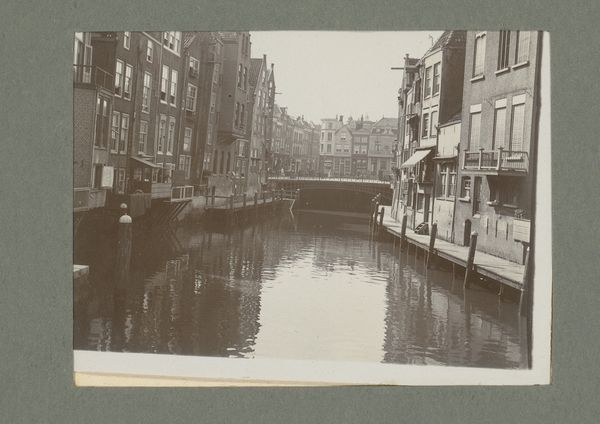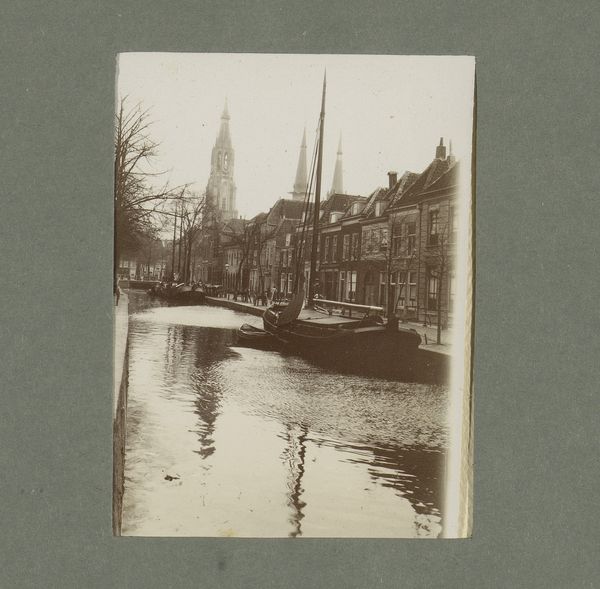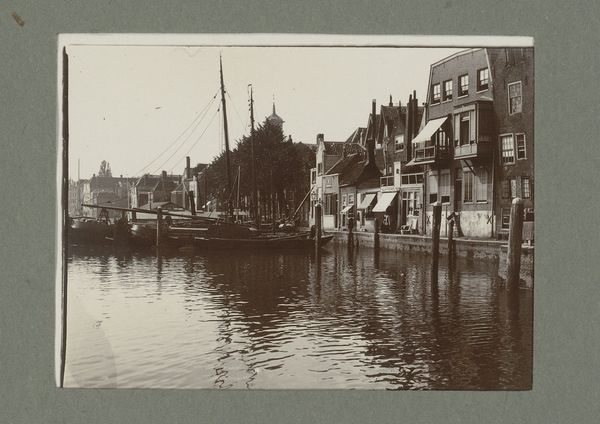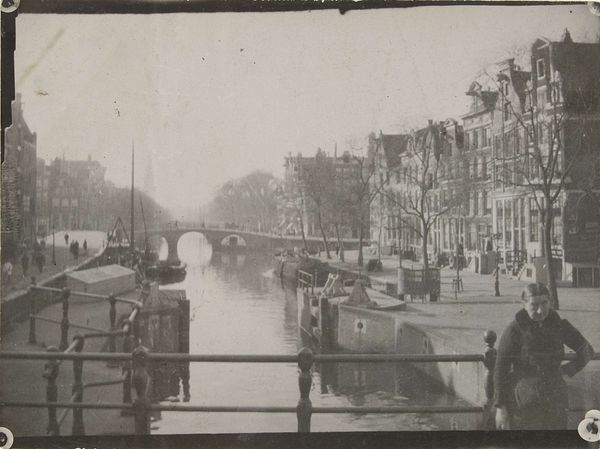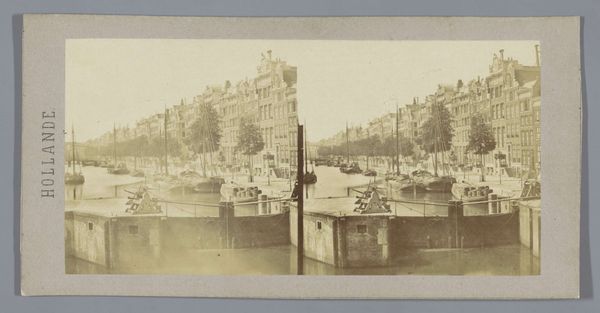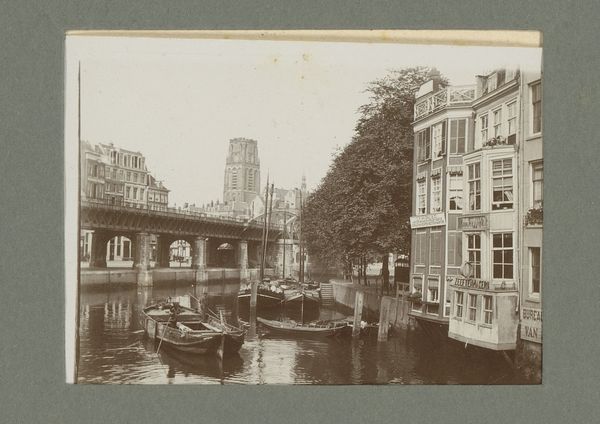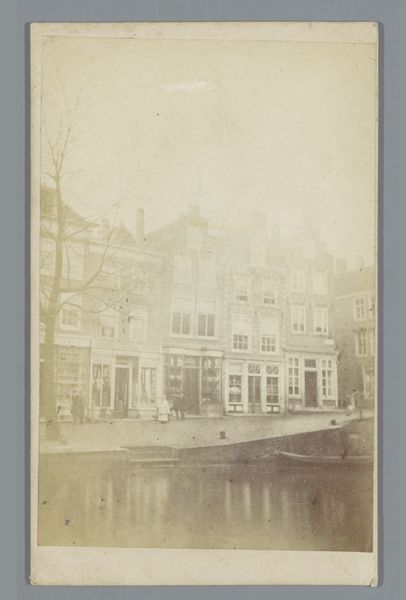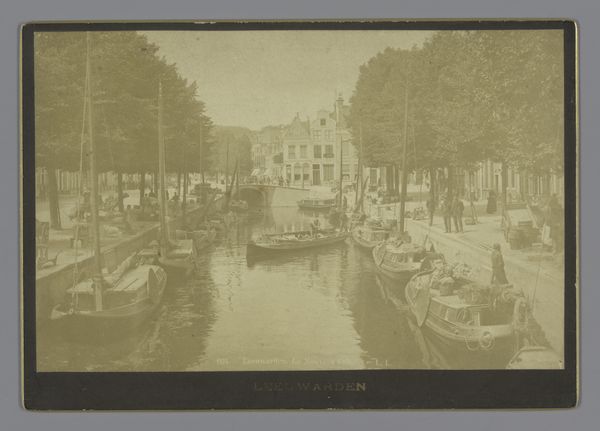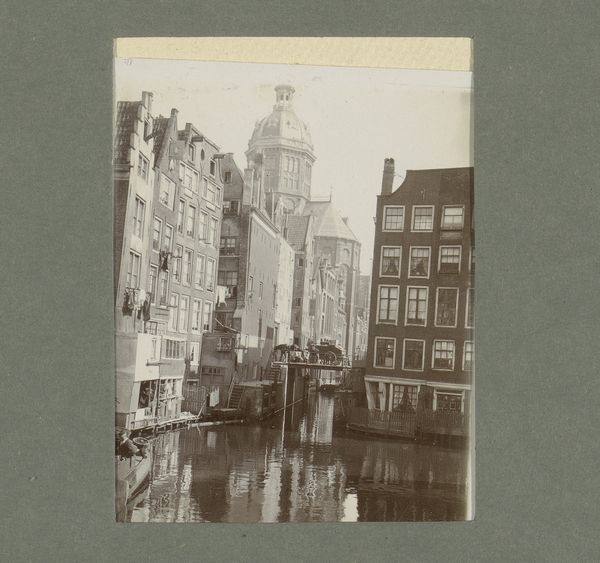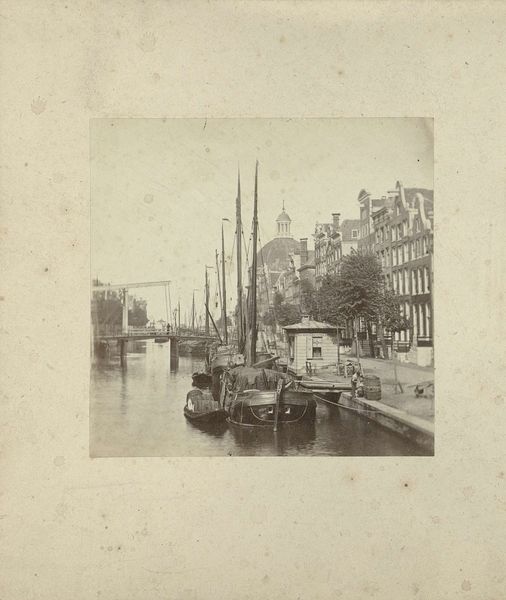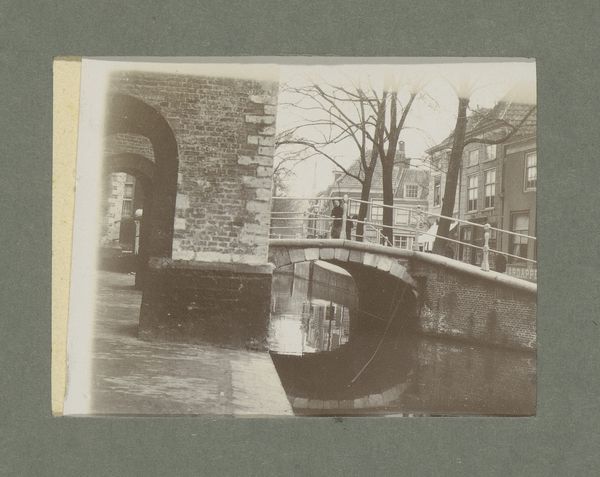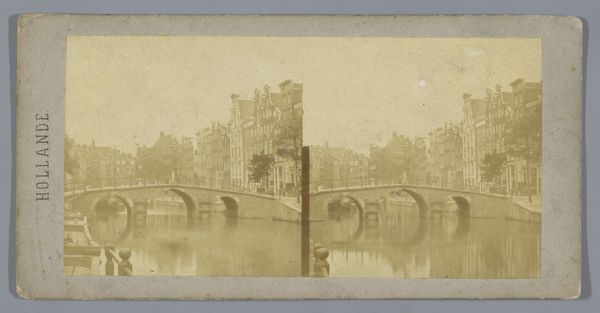
photography, gelatin-silver-print
#
pictorialism
#
landscape
#
photography
#
gelatin-silver-print
#
cityscape
Dimensions: height 99 mm, width 73 mm
Copyright: Rijks Museum: Open Domain
Curator: This gelatin silver print, likely created between 1900 and 1920, captures a view of the Toerijstuin towards the Binnenrotte in Rotterdam. It's attributed to G. Hidderley. What's your immediate impression? Editor: A quiet stillness, almost melancholic. The muted tones, the reflections in the water… it speaks of a Rotterdam caught between eras, clinging to its waterways as modernity encroaches. The watercraft seem almost obsolete in their setting. Curator: I find that observation quite resonant. Photography during this period, especially pictorialism, often explored a tension between romanticizing the past and documenting a rapidly changing society. This cityscape offers a visual narrative of that shift, particularly in urban settings undergoing industrial transformation. Consider the viewpoint and the implied class and status of a photographer being allowed to make the image, particularly capturing industry and labor. Editor: Exactly. The boats, presumably used for transport and trade along the canal, are positioned almost as artifacts of a bygone era. I wonder about the labor involved in their construction, maintenance, and use. It all comes back to thinking about Rotterdam’s location at the opening to so many European trade routes. You can see the raw materials to be loaded or unloaded if you examine some of the boat beds. This is what daily life was really about in this area and what many people depended upon. Curator: It makes me reflect on Rotterdam's identity. The waterway offers a certain kind of community, in a similar manner that it simultaneously created boundaries for inhabitants during that period. The canal itself serves as a line in the image's foreground between access to commercial endeavors and separation from resources. Editor: A subtle but vital observation. How many citizens had access to or used this passage for work purposes compared to their leisure and notional purposes? This gelatin silver print gives a specific account of commercial traffic, indicating a period in which water-based distribution networks remained critical. What seems idyllic to the contemporary observer had significant work and societal consequences. Curator: And in thinking of its contemporary position and historical setting, perhaps this is the photographer highlighting these contradictions in an indirect but very specific fashion, no? I’m particularly struck by how those boats create an industry based narrative throughout an otherwise pastoral image. Editor: That contrast, between pastoral composition and industrious context, highlights a moment of transition in the city's development. This wasn’t simply a scenic landscape, but a material site of work and trade. It makes the viewer appreciate that relationship to a harbor in a much deeper sense.
Comments
No comments
Be the first to comment and join the conversation on the ultimate creative platform.
